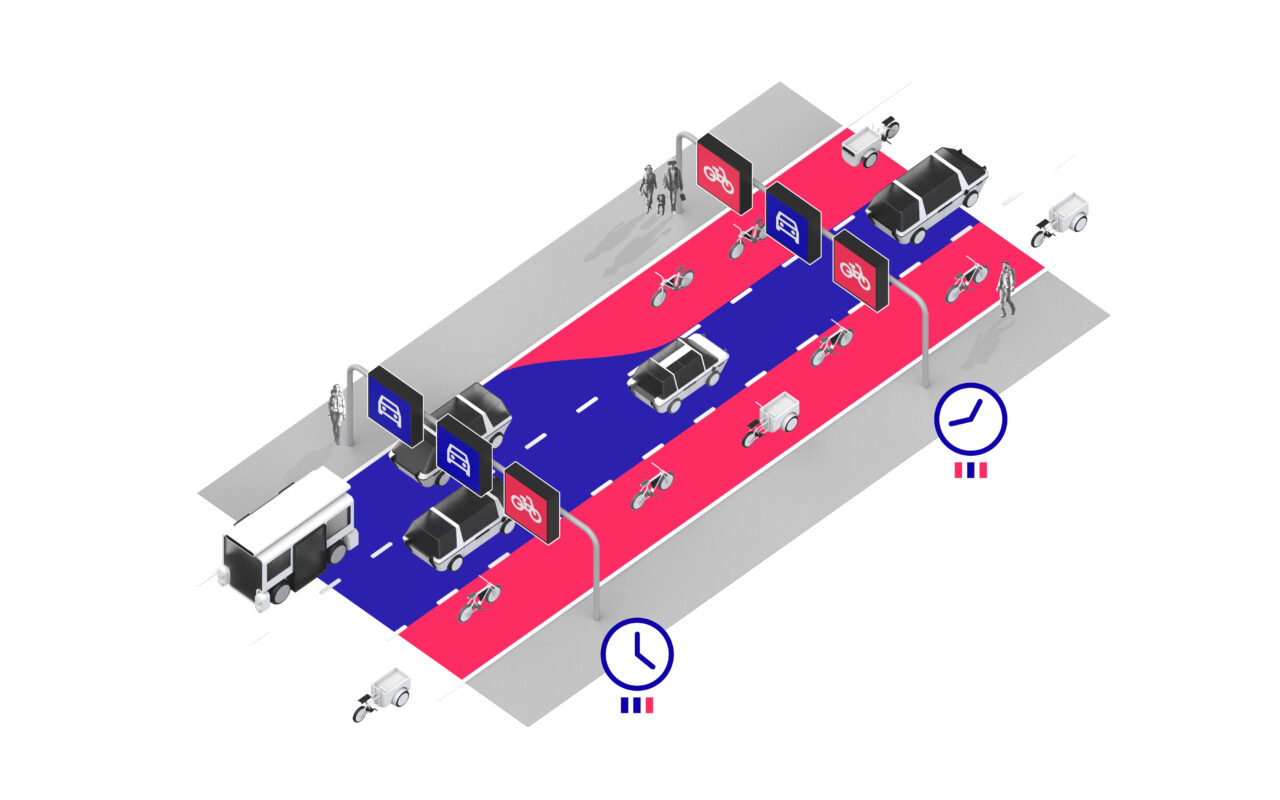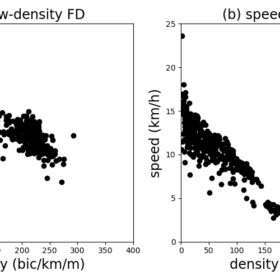
Allocating dedicated road space to slow modes is considered an effective way toward a radical modal shift. By exploiting traffic flow theoretical knowledge, convenient models can be developed to help evaluate the influence of such a large-scale transformation on network traffic performance. Novel strategies for bi-modal urban traffic management can also be proposed to solve congestion.
To foster a sustainable urban environment and decarbonize urban transport systems, major cities in the world have been promoting the usage of active transport modes, e.g., bikes, pedelecs, cargo-bikes, and e-scooters, etc. With the growing number of people using these modes, they could become one of the main bodies of road traffic in an urban network. Bicycle traffic congestion may no longer be an imagination. A safe and efficient road network needs to be built for these road users. However, allocating dedicated road space to slow modes reduces the available capacity for motorized vehicles, which can lead to severe car traffic congestion. To ensure quality level-of-service for car drivers and cyclists at the same time, the travel time experienced by both traffic modes should be considered in network re-design and traffic management.
For decades, traffic flow theory has mainly been applied to studies of motorized traffic. Most of the microscopic simulation tools or macroscopic models based on the fundamental diagram (FD) were developed for cars. Comparatively, there is much less research endeavour for bicycle traffic. Not to mention relevant discussions on capturing the bi-modal interactions in an urban network.
In-depth understanding of bicycle flow and a model for bi-modal urban network traffic dynamics are essential to facilitate the planning of cycling infrastructure and relevant traffic management strategies

In E-Bike City subproject D, we aim to develop an accurate and efficient bi-modal urban traffic model. Reproducing the congestion propagation and identifying the bottleneck locations within a network are important goals of the model. The modeling of bicycle flow at the network-scale, which has rarely been done in the past, is one of the key novelties of the research.
From a traffic engineering perspective, urban road space is limited and often underutilized. With the developed model, traffic performance of various road network designs can be evaluated. Hence, optimal road space allocation schemes can be determined based on the bi-modal traffic demand profiles at different periods of a day to increase the utilization efficiency of the available capacity. To further strengthen the bi-modal urban traffic system, advanced network-level control strategies, such as perimeter control and route guidance, can also be considered.
 Ying-Chuan Ni is a doctoral candidate at the Traffic Engineering group (SVT) of the Institute for Transport Planning and Systems (IVT), ETH Zürich. His research interests include macroscopic traffic flow modeling, microscopic traffic simulation, and traffic control.
Ying-Chuan Ni is a doctoral candidate at the Traffic Engineering group (SVT) of the Institute for Transport Planning and Systems (IVT), ETH Zürich. His research interests include macroscopic traffic flow modeling, microscopic traffic simulation, and traffic control.
